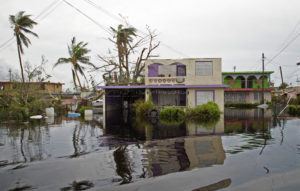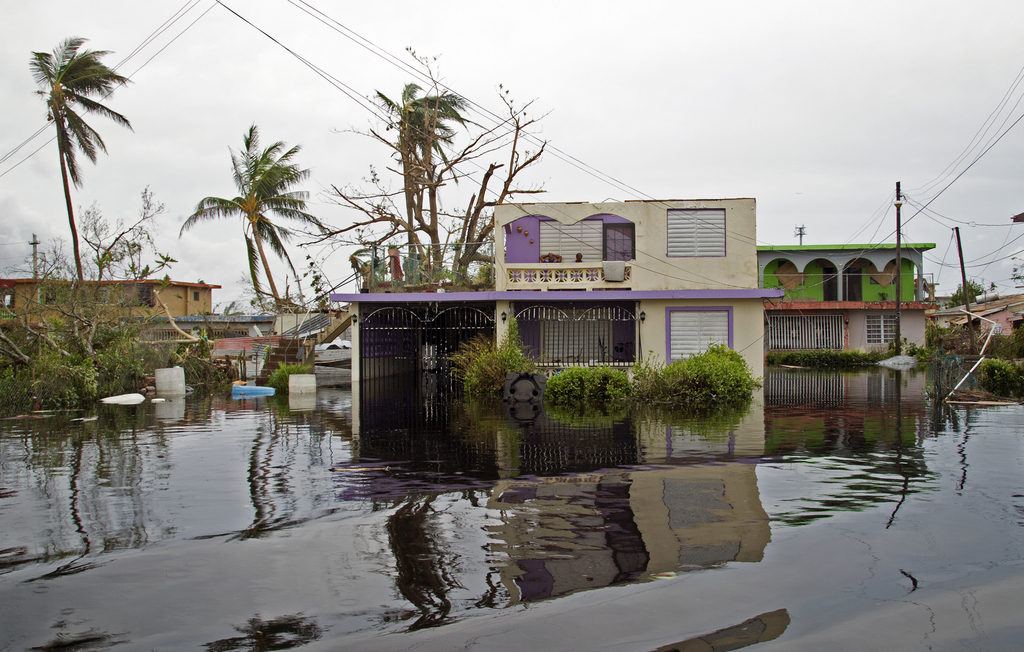Federal and local officials said Thursday that they are stockpiling radios, food, water and generators in Puerto Rico and demanding rigorous emergency training to prepare the U.S. territory for dealing with any catastrophic storm as the Atlantic hurricane season approaches.
In the wake of the devastation from Hurricane Maria, emergency plans have been changed to warn the island’s 3.3 million people that they need to have enough supplies to survive 10 days.
 Loíza, PR, September 21, 2017 – The community of Miñi Miñi flooded after the Carraizo Dam released water, due to the overflow brought by Hurricane Maria. The category 4 hurricane tore through Puerto Rico on September 20, 2017. Yuisa Rios/FEMA
Loíza, PR, September 21, 2017 – The community of Miñi Miñi flooded after the Carraizo Dam released water, due to the overflow brought by Hurricane Maria. The category 4 hurricane tore through Puerto Rico on September 20, 2017. Yuisa Rios/FEMA
“After Maria, we learned that three days is not enough,” said Carlos Acevedo, interim commissioner of Puerto Rico’s emergency management agency. “Now the minimum is 10 days … 10 days of supplies, 10 days of gasoline, 10 days of everything.”
He said satellite antennas have been installed and 100-watt radios distributed to police stations, emergency management centers, fire stations and hospitals so crews can still communicate in the event of a disaster.
Officials noted that Hurricane Maria destroyed all critical infrastructure across Puerto Rico when it hit as a Category 4 storm Sept. 20 with winds of up to 154 mph. It knocked out power for the whole island and caused damage estimated at more than $100 billion. Approximately 75 percent of power distribution lines were destroyed, and more than 20,000 power customers remain in the dark.
Steps are being taken to harden the communications system. More than 1,100 miles of fiber optic cable are now underground, and officials are discussing the idea of laying a submarine cable to Puerto Rico’s southern region, said Sandra Torres, president of the island’s Telecommunications Regulatory Board. She said 98 percent of the island’s cell towers are functioning again, and 1,800 new generators are on stand-by since 15 percent of the towers still depend on generators.
The U.S. Federal Emergency Management Agency is increasing its storage space from 80,000 square feet to 500,000 square feet, said Alejandro De La Campa, the FEMA director for Puerto Rico and the Caribbean. The agency will have 10 million liters of water on site, compared to the 800,000 liters it had prior to Maria, and seven times the amount of food it had previously. It is also bringing in 130 emergency high-capacity generators.
“We are preparing for a catastrophic event,” De la Campa said. “I hope we don’t have to use it.”
For the first time in a U.S. jurisdiction, local officials also will receive the type of training that only federal emergency coordinators undergo, he said. In addition, the U.S. Defense Department will hold a full-scale disaster exercise in Puerto Rico ahead of the June 1 start of the hurricane season.
Officials for both Puerto Rico and the federal government have been highly criticized for what some say was a botched response to Maria, which resulted in hundreds of thousands of people seeking food, water and other basic supplies for weeks after the storm.
“We should not have the same setbacks,” said Acevedo at the island’s emergency management agency. “We’ve already had the best lesson.”
Was this article valuable?
Here are more articles you may enjoy.


 Musk’s X Probed by UK Over Grok’s Thousands of Sexualized Images
Musk’s X Probed by UK Over Grok’s Thousands of Sexualized Images  Hyundai Unveils New Humanoid Robot for Work in Car Factories
Hyundai Unveils New Humanoid Robot for Work in Car Factories  Munich Re: Insured Losses From Wildfires, Storms and Floods Hit Record High
Munich Re: Insured Losses From Wildfires, Storms and Floods Hit Record High  Surging Oil Tanker Insurance Points to Growing Black Sea Chaos
Surging Oil Tanker Insurance Points to Growing Black Sea Chaos 